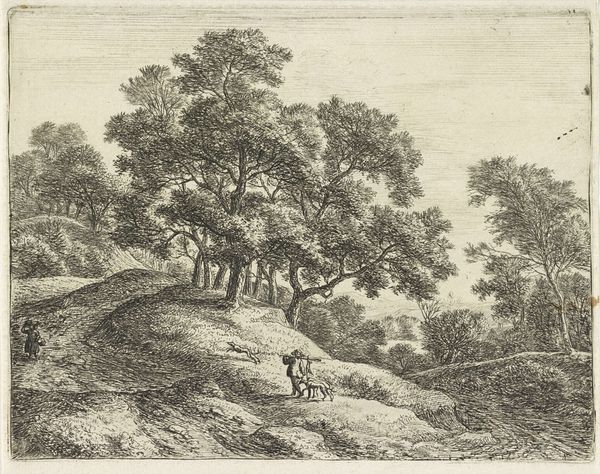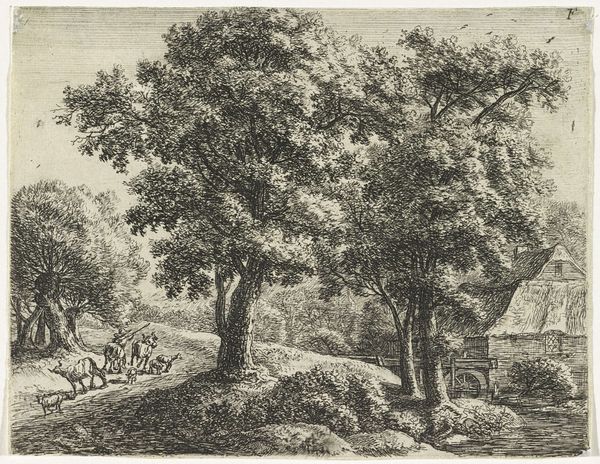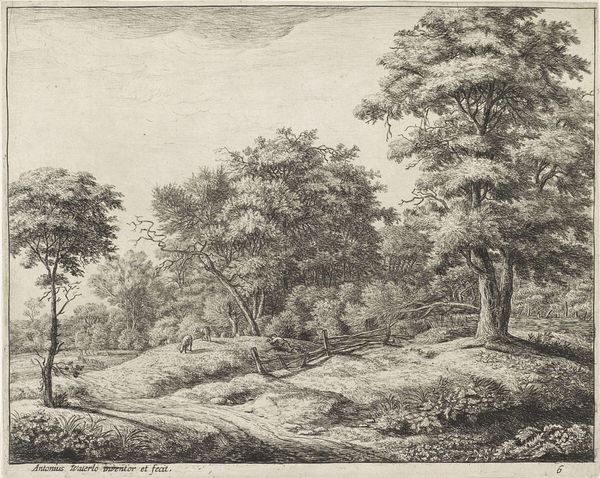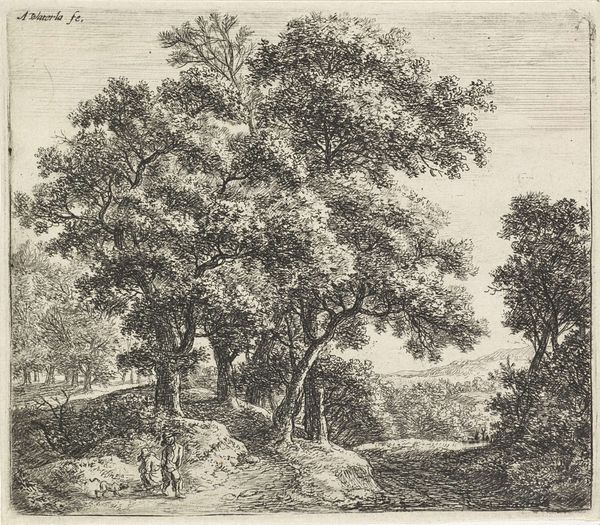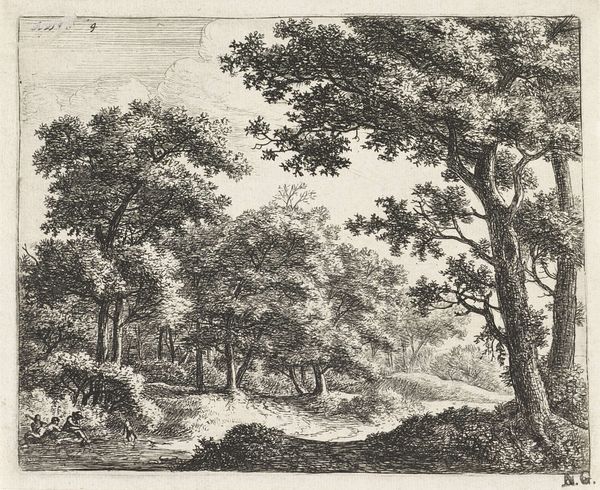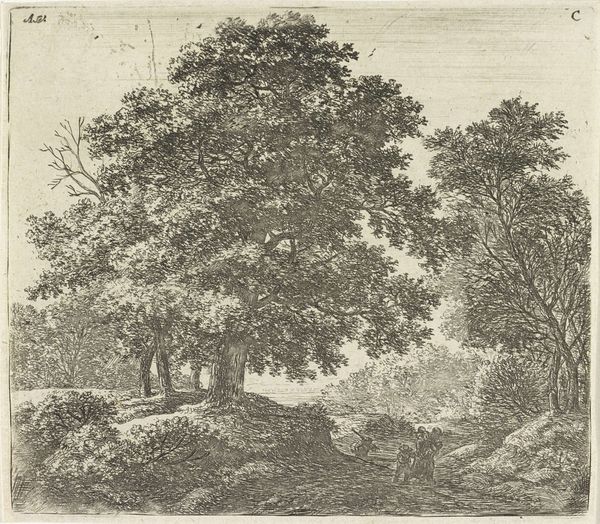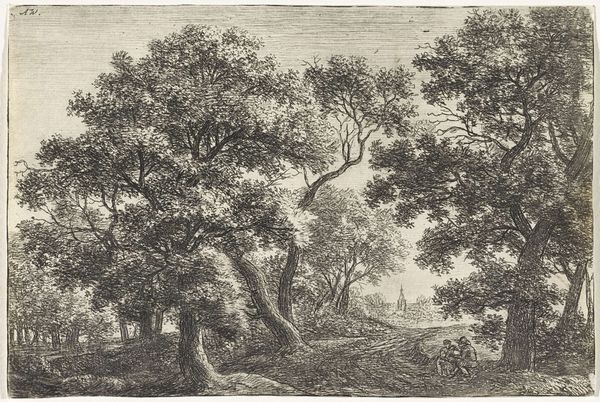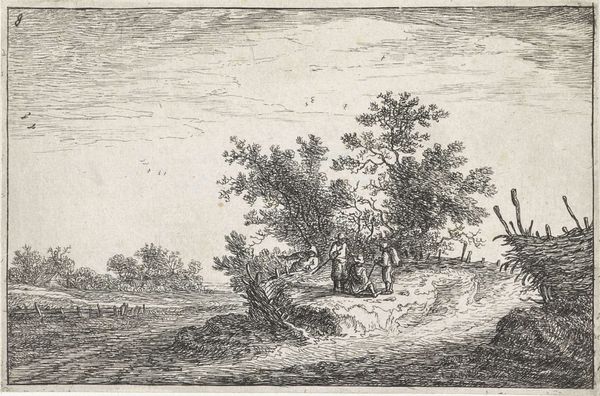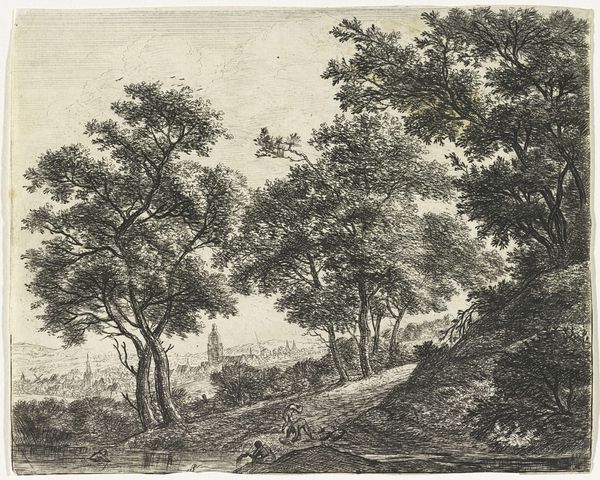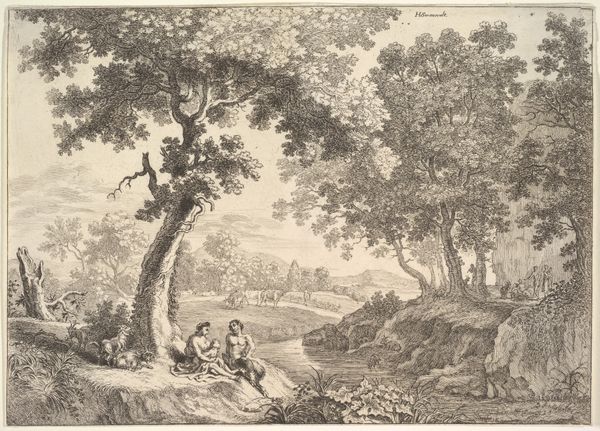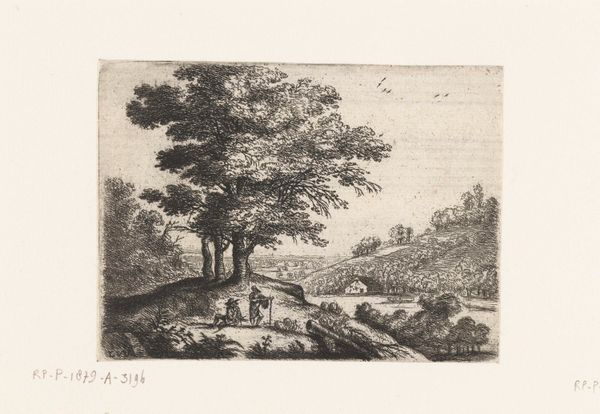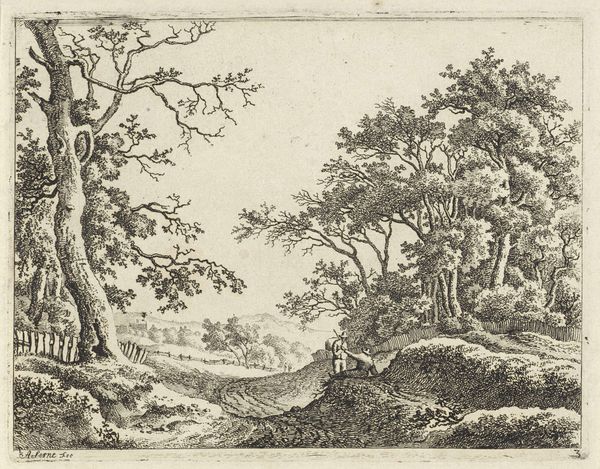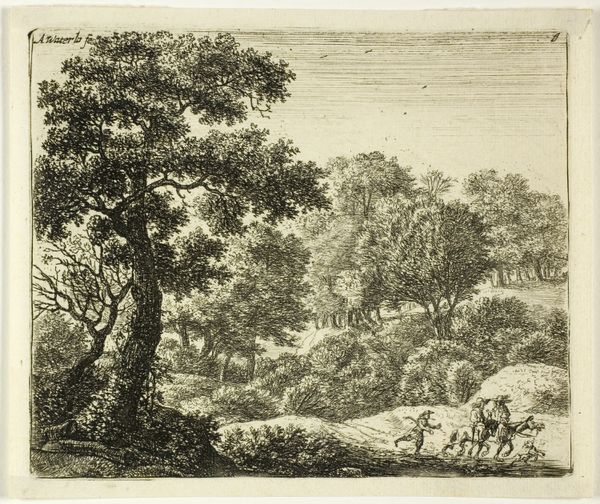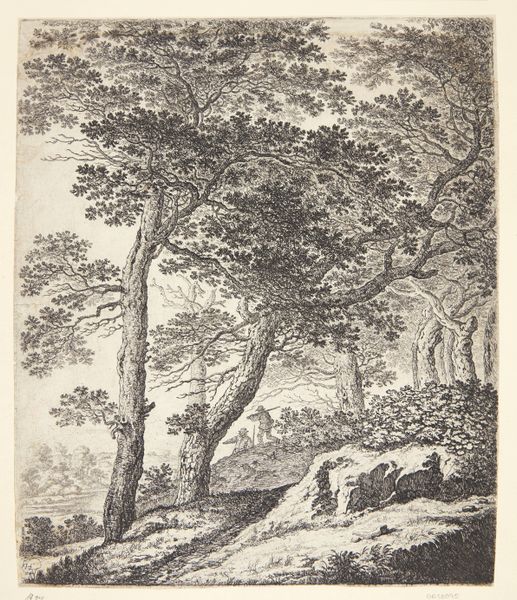
etching
#
baroque
#
etching
#
landscape
#
etching
#
figuration
#
line
Dimensions: height 131 mm, width 146 mm
Copyright: Rijks Museum: Open Domain
Curator: Welcome! We’re looking at "Twee figuren op een heuvel bij een huis," or "Two Figures on a Hill Near a House," an etching attributed to Anthonie Waterloo, created sometime between 1630 and 1675. Editor: It’s a remarkably detailed etching. The scene evokes a quiet stillness, like a brief respite from the world for the two figures resting there. There's almost an innocent peace radiating outward. Curator: Waterloo’s skill really shines in depicting nature. The looming tree dominating the scene might symbolize protection, perhaps even fertility with its sprawling presence. But note how these figures, seemingly small and insignificant, find solace at its base. Considering the social climate of the Dutch Golden Age, where ideas of domesticity and piety were gaining significance, it's possible the location offers a space where social status dissolves under the embrace of nature, though in reality access to rural land wasn't open to everyone. Editor: You see a maternal quality in the tree, I notice a sort of guardian figure aspect too. It reminds me of a similar image in an earlier emblem book where a sheltering oak is depicted, guarding a small house from some kind of symbolic turmoil. It implies not just safety, but a deep connection to tradition and rootedness. Are those figures a couple, a mother and child, or just friends sharing a quiet moment together? They certainly convey a sense of safety near the stream. Curator: Precisely. While their individual identities remain obscured, what they collectively embody is a deep-seated connection to their land and community, with themes prevalent during this era. Even though class structures confined interactions and land ownership for many, within these artistic representations there is that shared aspiration toward domesticity, however unevenly applied at that time. Editor: The presence of the water symbol, too; cleansing, renewal and reflection—it underscores the spiritual undertones of the print and the importance of nature in daily life, regardless of station. Curator: Right, in summary, through the artist's skilled handling of landscape, domestic imagery and spiritual symbols, the composition really provides multiple points of entry. Editor: This artwork continues to stir new ideas about land, life, and art itself!
Comments
No comments
Be the first to comment and join the conversation on the ultimate creative platform.
